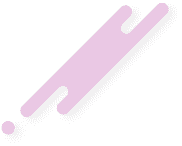Breaking Down the Data: The Secret Sauce for Budding Web Designers
Web design markets are ever evolving, putting extra pressure on novices to keep pace.
Emphasising the importance of meticulous research and data analytics in web design projects.
Unfolding the relevance of user experience (UX) and customer journey mapping in decision-making.
Illustrating the key role of performance metrics in crafting successful web designs.
Tracing the growth of minimalist design trends and their impact on audience engagement.
Outlining the checklist to consider before launching a design.
Venturing into the vast wilderness of the web design world can be as much fun as deciphering hieroglyphics for the first time. A saga of excitement coupled with uncertainty, the journey demands vigilance and complete surrender to evolving market trends.
Now, more than ever, web designers are under considerable pressure to provide a fresh perspective, consistent with changing consumer aesthetics and market preferences. As streamlining the exceptional becomes the new norm, it marks the rise of renewed focus on comprehensive research and data analytics for every project.
Why, you ask? Well, the answer lies in the art of predicting. No fortune teller tricks here, just plain old data interpretation. As the web landscape becomes increasingly competitive, understanding the target demographic becomes critical—know their likes, dislikes, browsing habits. This knowledge feeds into creating designs that are relatable, functional, and ultimately, unmatched in captivating the audience.
And, mate, you can't overlook the user experience! UX and customer journey mapping are no longer just fancy buzzwords. These considerations are at the heart of all decision-making processes, and rightly so. A design may be visually appealing, but if your visitor can’t navigate to desired information or actions with ease, it may as well be a maze.
Minimalism, as an aesthetic choice, is gaining traction as it declutters the visual space and directs the user's focus to critical elements. But bear in mind, minimalism doesn’t mean barren landscapes, but well-curated spaces that intensify the user's cognitive experience.
As designers, we must constantly evolve, testing our designs not just for superficial appeal but for their performance on both micro and macro levels. Designing is decoding—decoding user expectations, decoding market trends, decoding brand identity. So, here's to monitoring pixels as closely as words, may our designs strike the right chord with every user out there!


